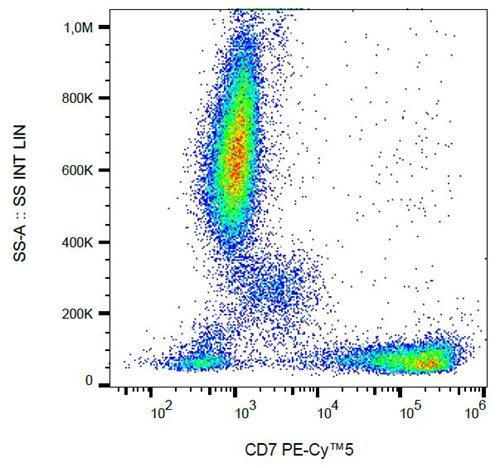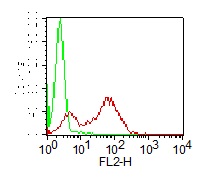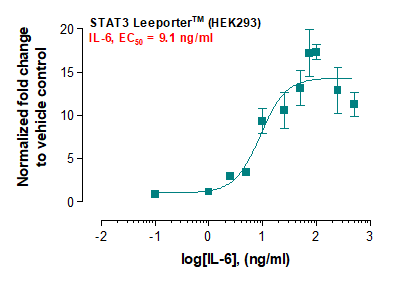Recombinant Mouse C-C motif chemokine 2/CCL2
Shipping Info:
For estimated delivery dates, please contact us at [email protected]
| Amount : | 50 µg |
| Content : | Lyophilized from a 0.2 µm filtered solution of PBS, pH7.4. |
| Storage condition : | Lyophilized protein should be stored at -20°C, though stable at room temperature for 3 weeks. Reconstituted protein solution can be stored at 4-7°C for 2-7 days. Aliquots of reconstituted samples are stable at -20°C for 3 months. |
| AA sequence : | QPDAVNAPLTCCYSFTSKMIPMSRLESYKRITSSRCPKEAVVFVTKLKREVCADPKKEWVQTYIKNLDRNQMR |
Source: E.coli.
MW :8.5kD.
Recombinant Mouse C-C motif Chemokine 2 is produced by our E.coli expression system and the target gene encoding Gln24-Arg96 is expressed. C-C motif chemokine 2 (CCL2) is a member of the C-C or beta chemokine family. Mouse CCL2 shares 82% amino acid (aa) identity with rat CCL2 over the entire sequence, and 58%, 56%, 55%, 53% and 53% aa identity with human, equine, porcine, bovine and canine CCL2, respectively. Fibroblasts, glioma cells, smooth muscle cells, endothelial cells, lymphocytes and mononuclear phagocytes can produce CCL2 either constitutively or upon mitogenic stimulation, but monocytes and macrophages appear to be the major source. In addition to its chemotactic activity, CCL2 induces enzyme and cytokine release by monocytes, NK cells and lymphocytes, and histamine release by basophils that express its receptor, CCR2. Additionally, it promotes Th2 polarization in CD4+ T cells. CCL2-mediated recruitment of monocytes to sites of inflammation is proposed to play a role in the pathology of atherosclerosis, multiple sclerosis and allergic asthma.
MW :8.5kD.
Recombinant Mouse C-C motif Chemokine 2 is produced by our E.coli expression system and the target gene encoding Gln24-Arg96 is expressed. C-C motif chemokine 2 (CCL2) is a member of the C-C or beta chemokine family. Mouse CCL2 shares 82% amino acid (aa) identity with rat CCL2 over the entire sequence, and 58%, 56%, 55%, 53% and 53% aa identity with human, equine, porcine, bovine and canine CCL2, respectively. Fibroblasts, glioma cells, smooth muscle cells, endothelial cells, lymphocytes and mononuclear phagocytes can produce CCL2 either constitutively or upon mitogenic stimulation, but monocytes and macrophages appear to be the major source. In addition to its chemotactic activity, CCL2 induces enzyme and cytokine release by monocytes, NK cells and lymphocytes, and histamine release by basophils that express its receptor, CCR2. Additionally, it promotes Th2 polarization in CD4+ T cells. CCL2-mediated recruitment of monocytes to sites of inflammation is proposed to play a role in the pathology of atherosclerosis, multiple sclerosis and allergic asthma.
Endotoxin : Less than 0.1 ng/µg (1 IEU/µg) as determined by LAL test.
For Research Use Only. Not for use in diagnostic/therapeutics procedures.
| Subcellular location: | Secreted |
| BioGrid: | 203121. 2 interactions. |
|
There are currently no product reviews
|



















.png)










